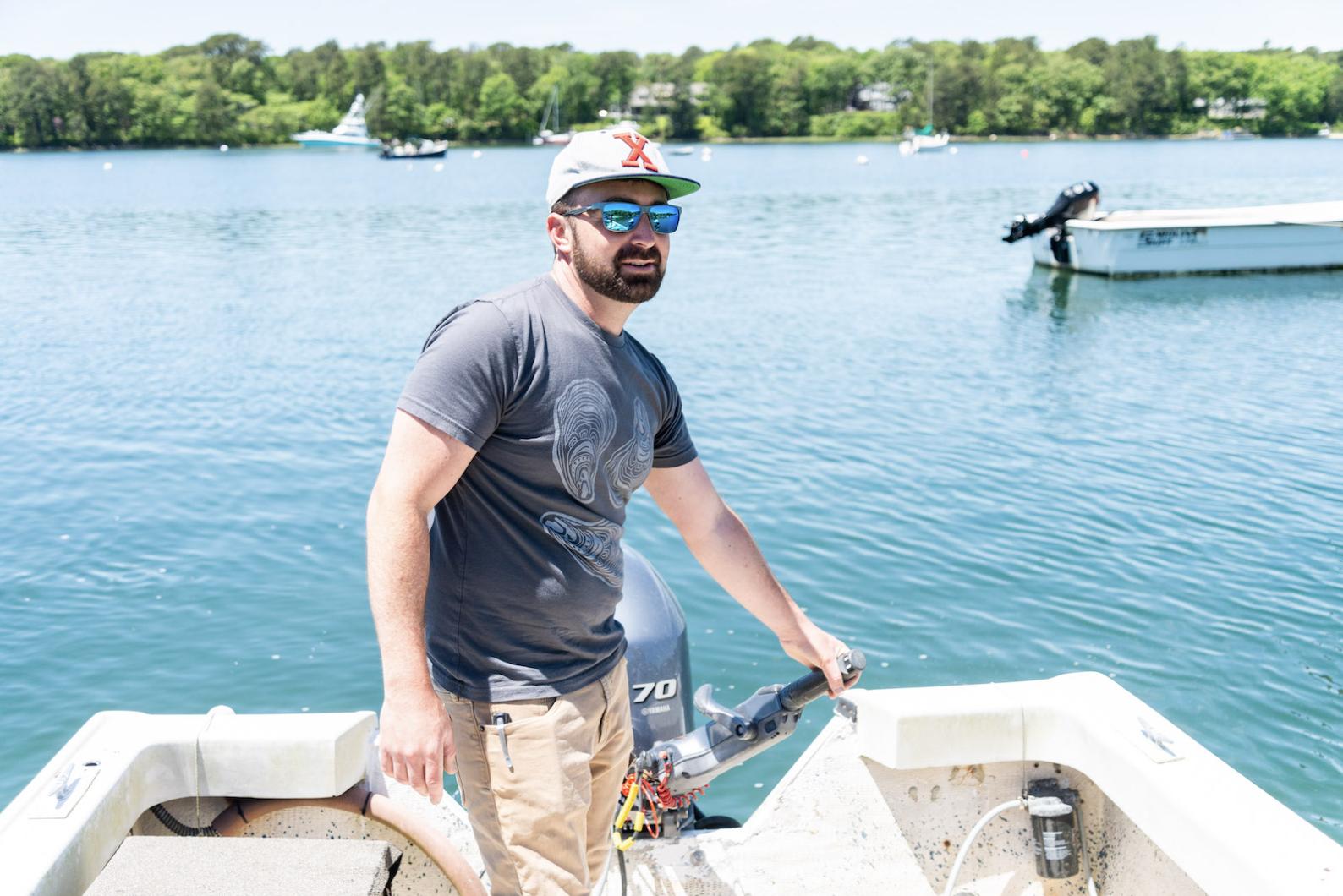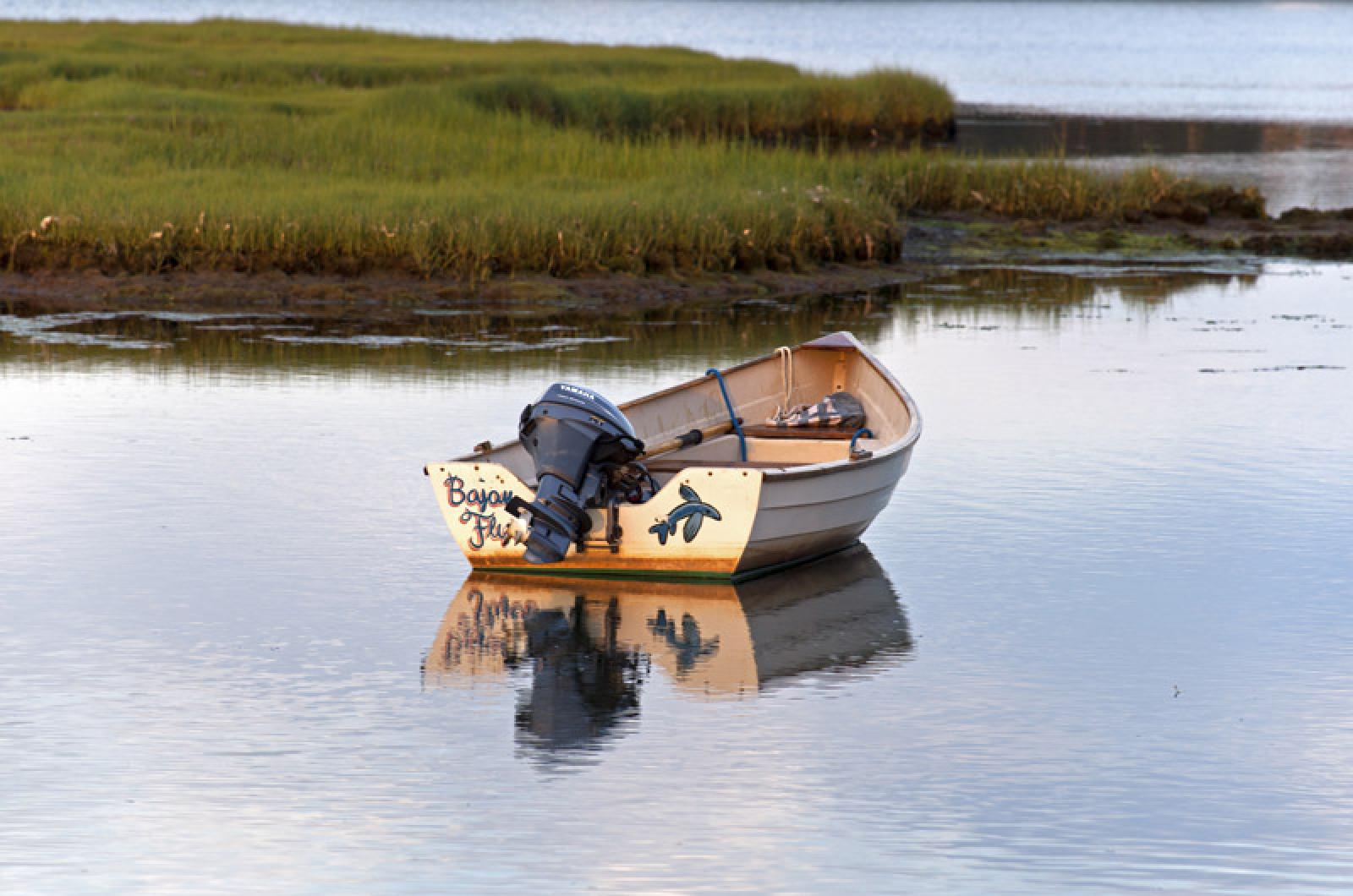The Tisbury select board unanimously approved changes to the town’s aquaculture regulations that will allow oyster farmers in Lagoon Pond to grow their crops closer to the water’s surface.
“They felt that the water quality closer to the bottom was not giving them the product they needed,” natural resources advisory committee chair Tom Robinson told the select board at a public hearing Feb. 7.
The advisory committee, which was created last fall to replace the town waterways committee, recommended the changes, Mr. Robinson said.
“The main crux, or the main sticking point, was the issue of floating gear and bird deterrent,” he said.
Oyster racks floating at or near the water’s surface could attract seabirds whose excrement poses a contamination hazard, but Mr. Robinson said the multi-layered application process for shellfish farmers will give local officials oversight.
“I’m pretty confident that given … best practice bird deterrence and the review by the select board and everyone else who reviews it, I think you can look at each application individually and decide whether they’ve satisfied what you think is a good application,” Mr. Robinson said.
The town’s past regulations required oysters to be grown at the bottom of the pond to reduce the possibility of conflicts with recreational boaters and other pond users.
Noah Mayrand began raising oysters in Lagoon Pond in 2022 and soon discovered the muddy bottom was limiting the bivalves’ growth — and worse.
“Half my oysters died,” Mr. Mayrand said at the public hearing.
“If these rules don’t pass, I’m not able to support all the oysters that I have in my farm currently, with the way that the regulations are laid out,” said Mr. Mayrand, who serves on the natural resources advisory committee but recused himself from the committee’s vote to recommend the new rules.
However, Mr. Mayrand did have a hand in crafting the updated regulations, along with oyster farmers Jeffrey Canha and Gregory Martino.
“Bottom-conditioned oysters are now the bottom end of all markets in the United States,” Mr. Mayrand said. “Anything off the bottom is rising to the top to catch the highest price to be at the fanciest and the best restaurants in the world [and] I think that Tisbury could easily rise to the top with the product that I’m getting so far. I just need to do what I need to do for them to survive. I think this really helps that.”
Countering Mr. Mayrand’s enthusiasm, Doug Reece of the Lagoon Pond Association asked the select board to consider the pond’s many other users.
“There’s sailing, kayaking, fin fishing, shellfishing, swimming, recreational boating, tubing and all these other activities going on,” Mr. Reece said, calling for a moratorium on aquaculture licenses until the pond is fully mapped by the Martha’s Vineyard Commission.
“We’re not suggesting a moratorium on the existing farms,” added association president Sherry Countryman.
“What we’re suggesting is that … before issuing any additional licenses, you might want to take a breath and look at what’s going on in the lagoon. It is incredibly crowded right now,” Ms. Countryman said.
Natural resources advisory committee John Packer said the oyster farmers take up a negligible amount of space in the pond.
“The lagoon is 347 acres, I believe. They’re using one acre,” Mr. Packer said. “It’s like taking one parking space out of a Walmart parking lot. There’s plenty of room for everybody.”
The town currently has three one-acre aquaculture grants in the pond, one each for Mr. Mayrand, Mr. Canha and Mr. Martino.







Comments
Comment policy »